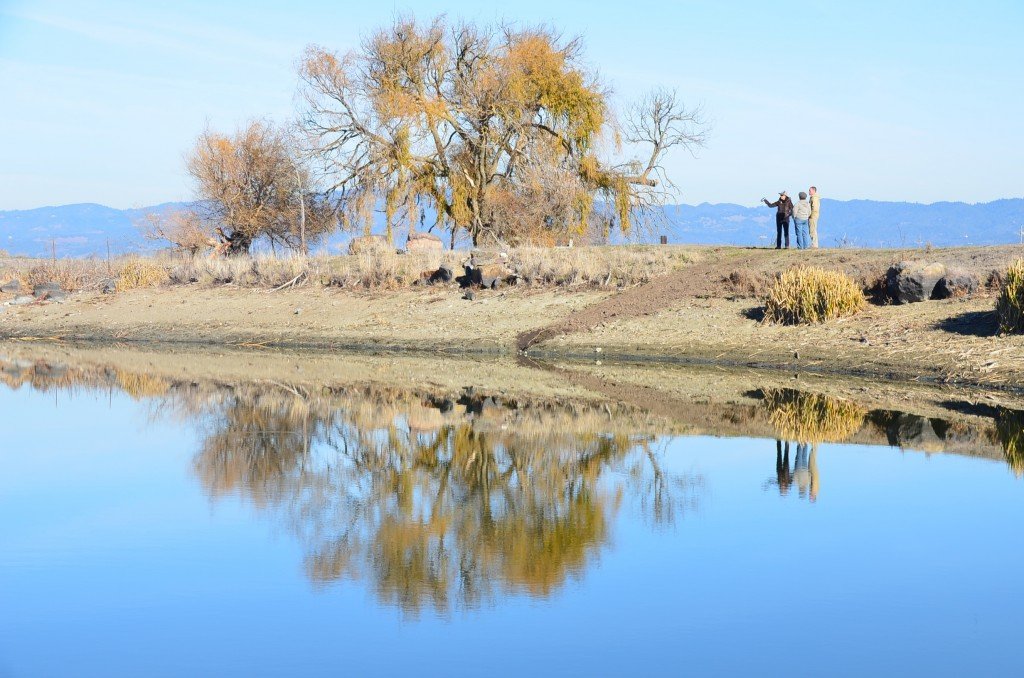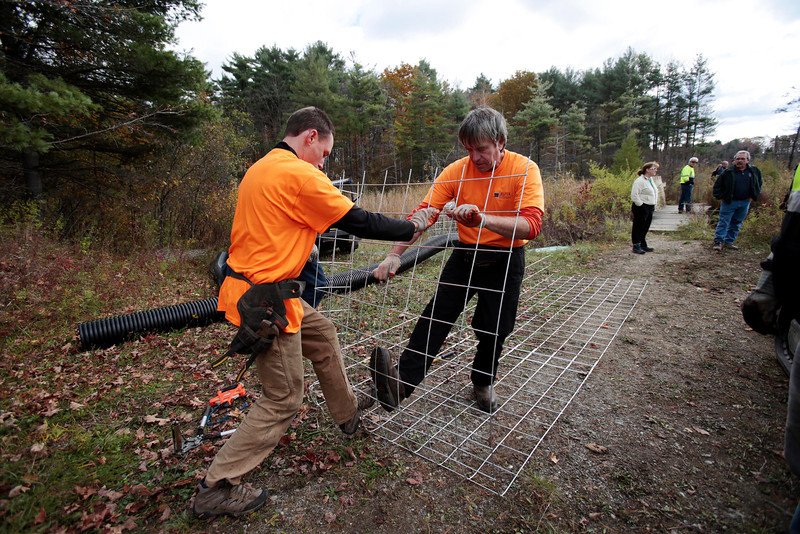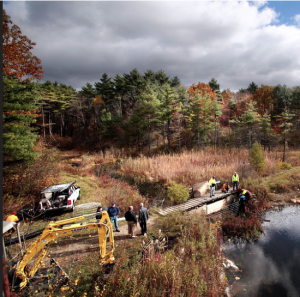Phillips 66—potential pond leveler
Last month an environmental engineer from Phillips 66 contacted me, right before I was set to leave for the Colorado trip. She explained that there was a beaver dam flooding an access road to one of their facilities in Rodeo, California and asked about installing a pond leveler.  Later that day we toured the site, and I found this “dam”. It’s pretty small—maybe 20′ across, by 2-3 feet tall, but enough to make a little pond across the road.
Later that day we toured the site, and I found this “dam”. It’s pretty small—maybe 20′ across, by 2-3 feet tall, but enough to make a little pond across the road.
She was very clear about wanting to keep the beaver in the creek. This is very exciting news, and I hope that the project can make it through the permitting process, but this is by no means a done deal. A lot of great ideas get killed in the paperwork department.
Right now it looks pretty good, although the unwelcome specter of million-dollar insurance has appeared. It seems excessive to me—I can assemble the whole thing off-site, and will be off the road for the whole build. That said, liability can be a real barrier for some folks, and I’ll have to figure this one out eventually.
Side Note: I’ve noticed a tendency toward unnecessary complexity in the planning process. As a result, I’m posting this as a kind of FAQ for anyone in the crowd who might be involved with permitting (to be updated as needed):
Some important notes about pond levelers.
- Beaver “dams” are nothing more than soft, leaky piles of sticks and mud that briefly slow down the flow of water. They don’t actually stop the water, they’re not anchored to anything solid, and they won’t survive high flow events.
- Pond levelers are very simple. A pond leveler is a small cage made of fencing, and a short length of flexible pipe. An experienced person, working alone, can make and install one in 4-5 hours using simple hand tools.
- Therefore no concrete or engineering is required. It’s a small, flexible pipe installed through a soft pile of sticks and mud. During high flow events that briefly overwhelm the pond leveler’s flow capacity, the beaver “dam” it is installed through will be first overtopped, and then washed downstream entirely if flows are high enough.
- A pond leveler is not a siphon. In fact, these systems are specifically designed to make sure that siphoning is impossible. The entire top of the pipe is perforated, ensuring that no vacuum can form.
- It can’t build any pressure. There is zero “head”, because the inlet for the pipe is below the outlet. The pond leveler simply acts as an overflow for the beaver dam, no differently than an open spillway.
- And it can’t drain the area. Since the pipe is installed in the top of a beaver dam, it will only lower the water as far as the bottom of the pipe. The installer and landowner determine the final water height. This allows the beavers to stay in the area, prevents flooding, and retains valuable habitat for all the other species that depend on the beaver ponds.




